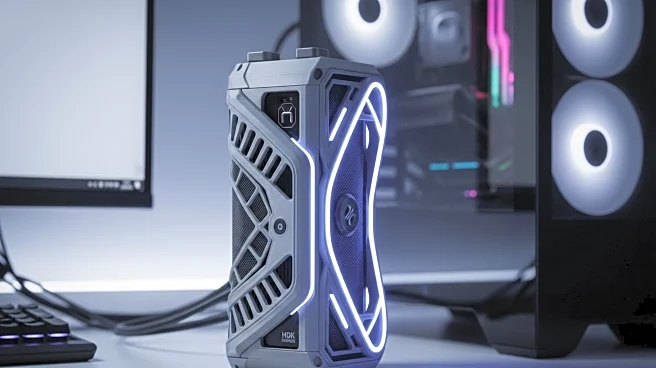What's Happening?
Noctua, a PC cooling company, has introduced a 3D-printed modification for the Framework Desktop, aimed at reducing noise levels. The mod includes a new fan duct and a custom side panel, which lower the noise of the desktop's cooling fan by five to seven decibels. This improvement is achieved without altering other components, thanks to a specially designed fan grill with a spiral pattern that allows for efficient airflow at lower rotation speeds. The grill's design is tailored to the geometry of the NF-A12x25 fan's blades, minimizing pressure fluctuations and enhancing cooling performance.
Why It's Important?
This development is significant for the PC modding community, offering a practical solution to enhance the performance of the Framework Desktop. By reducing noise levels, Noctua's mod improves the user experience, making the desktop more suitable for environments where quiet operation is essential, such as offices or home studios. The use of 3D printing in creating these modifications highlights the growing trend of personalized and accessible technology solutions, allowing users to customize their devices according to specific needs. This innovation could encourage more companies to explore 3D printing for consumer electronics, potentially leading to a wider range of customizable tech products.
What's Next?
As Noctua's mod gains attention, it may inspire other companies to develop similar solutions for different devices, expanding the market for 3D-printed tech modifications. Framework Desktop users might explore additional customization options, leveraging 3D printing to enhance various aspects of their devices. The success of this mod could lead to collaborations between Noctua and other tech companies, fostering innovation in cooling technology and device customization. Additionally, the mod's popularity might drive Framework to consider integrating such features into future product designs, enhancing their appeal to tech enthusiasts and modders.
Beyond the Headlines
The use of 3D printing in tech modifications raises questions about sustainability and the environmental impact of consumer electronics. As 3D printing becomes more prevalent, it offers opportunities to reduce waste by enabling precise manufacturing and minimizing excess material usage. This approach aligns with broader industry trends towards eco-friendly practices and could contribute to more sustainable tech production. Furthermore, the ability to customize devices through 3D printing empowers consumers, allowing them to tailor products to their preferences and potentially extending the lifespan of their devices.

